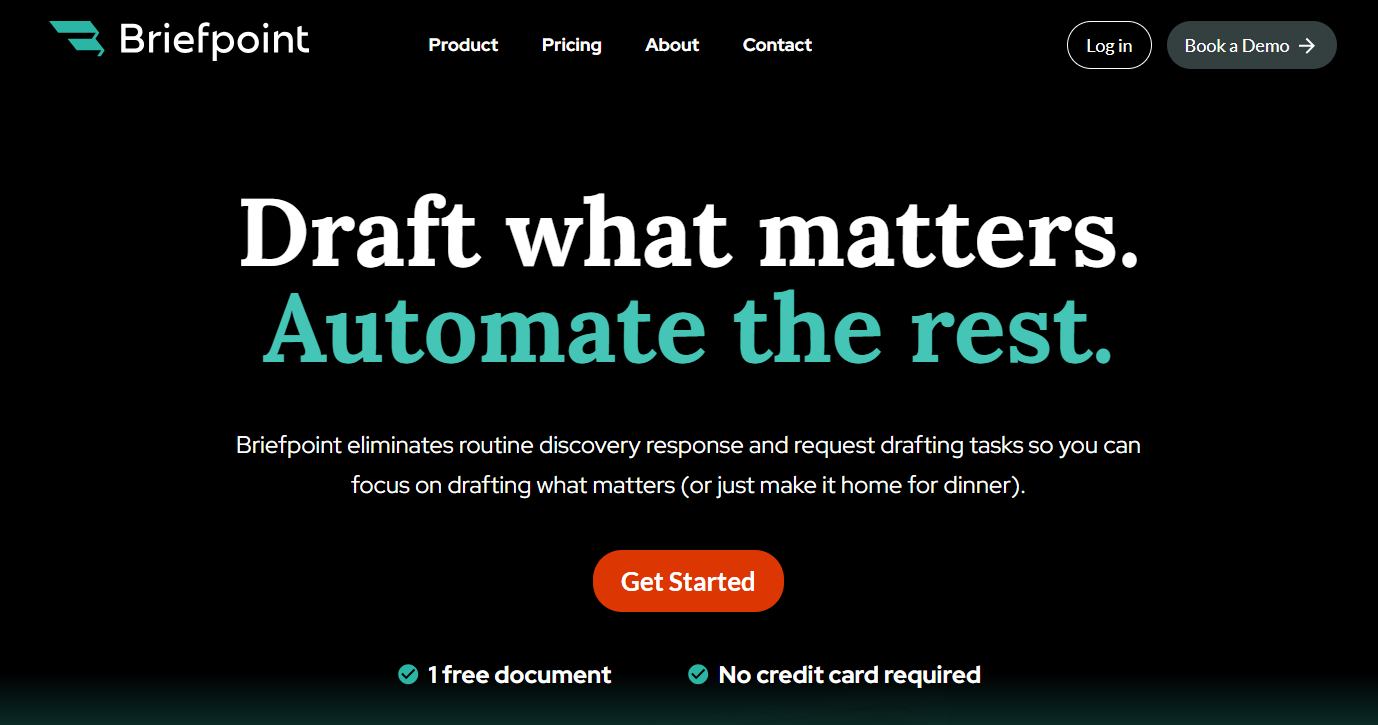What is Litigation Management?
What is Litigation Management?
Litigation management gives structure to a process that can easily become chaotic.
As legal matters grow more complex and the pressure to manage timelines, budgets, and outcomes increases, having a clear approach becomes essential. This is where a structured process and often, litigation management software, can make a measurable difference.
Instead of dealing with deadlines, documents, and costs all at the same time, software helps centralize the work. It gives you visibility into what’s happening across cases and lets you respond with more focus and less guesswork.
Whether you’re managing a single dispute or overseeing a large caseload, a consistent system helps you avoid surprises and keep legal work aligned with business priorities.
In the sections ahead, we’ll break down the practical components of litigation management and how they fit into the way you work.

What Is Litigation Management?
Simply put, litigation management is how legal teams organize and control the entire litigation process, from intake to resolution. For corporate legal departments and law firms, it’s a defined system for handling legal disputes, managing risk, and keeping outside counsel accountable.
The goal is simple: make smarter decisions, avoid surprises, and stay aligned with the business.
Effective litigation management typically includes:
- Defining a clear, case-by-case litigation strategy
- Tracking deadlines, filings, and related matters
- Monitoring legal spend and reporting on key metrics
- Coordinating with internal business units
- Managing large volumes of documents and communication
- Using legal tech tools to centralize case data
Without a practical framework in place, litigation tends to get reactive. But when it’s managed well, legal teams can respond faster, control outcomes, and support the company’s bigger goals.
4 Key Elements of Litigation Management
Litigation management works best when it’s built on structure, visibility, and consistency. Whether you’re handling one high-stakes case or dozens of routine matters, the same building blocks apply.
These are the core elements that can help your team stay in control and respond with confidence:
1. Strategy and Early Assessment
Before diving into the details of a case, take a step back and look at the big picture. What’s the real risk here? What outcome are you aiming for? Is this something worth settling early, or fighting all the way through?
Your overarching goal at this stage is to make informed decisions that shape everything that follows, and a strong early assessment sets the tone. It keeps you aligned with your internal stakeholders, avoids wasted time, and gives you a clear path forward.
As you assess the case, consider:
- How strong the facts and claims actually are
- Which business units need to be looped in early
- How much time and budget the matter might demand
- What a win (or loss) means for the company
A comprehensive approach up front saves time later. It helps you stay focused, communicate clearly, and build a litigation strategy that works for the case and for the business.
2. Budgeting and Outside Counsel Management
Tracking invoices alone doesn’t give you the full picture. You need to know how your resources are being used and whether the outcomes justify the spend.
Setting billing guidelines, defining project phases, and agreeing on scope early all help keep legal fees under control and aligned with your goals.
Regular check-ins with outside counsel are essential. They keep work focused and give you insight into what’s progressing and where adjustments may be needed. When you head into settlement negotiations, having that level of visibility puts you in a stronger position.
Tying budget to results helps you make smarter calls. It also creates accountability and gives you more leverage to reduce costs without sacrificing quality or strategy.
3. Document Automation and Workflow Tools
When you’re managing large volumes of filings, responses, and discovery documents, doing everything manually slows you down and increases risk.
In contrast, automation lets you move faster without losing accuracy. It doesn’t replace your unique skill as an attorney. Rather, it gives you more time to apply it where it matters.
Document automation tools help you:
- Draft discovery responses and requests quickly
- Maintain formatting and language consistency across matters
- Track due dates and document versions
- Stay organized when collaborating with internal teams and outside counsel
This kind of legal technology is especially useful during high-volume phases like discovery or just before trial, when time is tight and errors are costly.
Tools like Briefpoint make it easier to generate polished, objection-ready documents in minutes, which ultimately frees you up to focus on strategy.
For attorneys aiming to scale their impact and improve day-to-day workflows, legal automation offers more than speed. It creates room for deeper focus, fewer errors, and long-term success without the constant drain of repetitive work.
4. Reporting and Metrics
Improvement starts with visibility. When you track key metrics, like average case duration, spend by matter type, or case outcomes, you get real insight into how your litigation efforts are performing.
That understanding gives you the ability to make smarter strategic decisions, justify your legal bill, and show how your team adds value.
Good reporting also supports transparency across departments and builds credibility with leadership and clients. It turns legal data into something actionable, not just numbers on a spreadsheet.
For example, after a major post-trial outcome, reviewing timelines, costs, and firm performance can help you understand what went well and what needs to change. This feedback loop helps improve future services and reduce risk across the board.
Win Back Time and Control During the Litigation Process With Briefpoint
You already have enough to manage, discovery shouldn’t slow you down. Drafting objections, keeping formatting consistent, and managing deadlines take up hours you could be spending on higher-value work.
Briefpoint takes care of the repetitive parts. It automates discovery drafts so you can move faster without sacrificing accuracy. Upload your document, choose your objections, and download a clean, court-ready file in minutes.
If your team is managing a growing caseload and limited resources, this gives you room to focus where it counts.
Book a Briefpoint demo and see how much smoother your discovery process can run.
FAQs About What is Litigation Management
What is the meaning of litigation management?
Litigation management refers to the way legal teams plan, track, and control the entire litigation process. It helps ensure that legal disputes are handled efficiently, with a clear strategy, cost control, and coordination across internal and external teams.
What is a litigation management system?
A litigation management system is a tool or platform that helps organize and streamline litigation work. It may include features for tracking deadlines, managing documents, monitoring legal spend, and generating reports. Many corporate legal departments use these systems to stay on top of active cases and improve decision-making.
What does it mean if your case goes to litigation?
If your case goes to litigation, it means a legal dispute is moving into the court process. This involves formal procedures like filing claims, responding to complaints, exchanging information, and possibly going to trial. It’s the opposite of resolving the issue through informal settlement or negotiation.
Is litigation the same as a lawyer?
No, litigation is a legal process, while a lawyer is a professional who represents you in that process. Litigation can involve multiple lawyers, but not all lawyers handle litigation. Some focus on advisory work, contracts, or regulatory matters outside of court.
How can effective litigation management help reduce costs and legal spend?
Effective litigation management gives you more control over how time and money are spent during the litigation process. By setting clear strategies early, tracking performance, and using tools like document automation, you can reduce unnecessary work and avoid surprise expenses. This approach helps limit legal spend, avoid delays, and ultimately reduce costs without compromising outcomes.
The information provided on this website does not, and is not intended to, constitute legal advice; instead, all information, content, and materials available on this site are for general informational purposes only. Information on this website may not constitute the most up-to-date legal or other information.
This website contains links to other third-party websites. Such links are only for the convenience of the reader, user or browser. Readers of this website should contact their attorney to obtain advice with respect to any particular legal matter. No reader, user, or browser of this site should act or refrain from acting on the basis of information on this site without first seeking legal advice from counsel in the relevant jurisdiction. Only your individual attorney can provide assurances that the information contained herein – and your interpretation of it – is applicable or appropriate to your particular situation. Use of, and access to, this website or any of the links or resources contained within the site do not create an attorney-client relationship between the reader, user, or browser and website authors, contributors, contributing law firms, or committee members and their respective employers.
